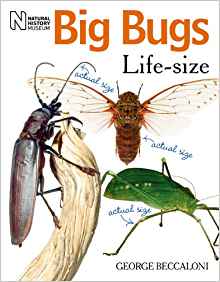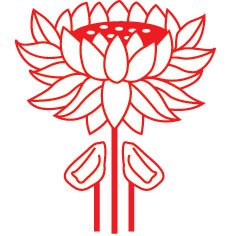-
Chameleons. Christopher Mattison and Nick Garbutt
Christopher Mattison
Paperback (Natural History Museum, May 1, 2012)With flattened bodies, opposed feet, independently swivelling eyes, a prehensile tail, and the ability to change colour to match their background, chameleons are both fascinating and charismatic. Chameleons is the first popular guide to this extraordinary animal group. This fully illustrated book begins by exploring chameleon evolution and classification, describing how they fit into life's evolutionary tree and revealing their close relations. It discusses the variations in size, shape, colour and markings among the 173 species and explains why chameleons look like they do. There follows chapters on reproduction and development, food and feeding, habitat and distribution as well as how chameleons defend themselves against predators. The final chapter examines the relationship between chameleons and humans, from their occurrence in mythology and superstition to worldwide conservation work and keeping chameleons as pets. Drawing on their vast experience, the authors provide an illuminating insight into the lives of these unusual animals, their natural habitats and their care and breeding in captivity.
-
The Encyclopedia of Dinosaurs: The Theropods
Rubén Molina-Pérez, Asier Larramendi
Hardcover (The Natural History Museum, June 6, 2019)Theropod dinosaurs ruled the planet for millions of years, with species ranging from the mighty Tyrannosaurus rex to feathered raptors no bigger than turkeys. The Encyclopedia of Dinosaurs: The Theropods is a stunningly illustrated guide packed with everything you could ever wish to know about theropods. This one-of-a-kind compendium features more than 3,000 records, covers some 750 theropod species, and includes a wealth of illustrations ranging from diagrams and technical drawings to full-colour reconstructions of specimens. The book is divided into sections that put numerous amazing theropod facts at your fingertips. 'Comparing Species' reveals detailed size comparisons, how long ago they lived, and when they were discovered. 'Mesozoic Calendar' shows the positions of the continents at different geological time periods and reconstructions of creatures from each period. 'Prehistoric Puzzle' compares bones, teeth, and feathers while 'Theropod Life' uses vivid, user-friendly graphics to answer questions such as which dinosaur was the smartest and which had the most powerful bite. Other sections chart theropod distribution on the contemporary world map, provide comprehensive illustrated listings of footprints, compile the physical specifications of all known theropods and Mesozoic birds, and much more.
-
New Look at the Dinosaurs
Alan Charig
Paperback (Natural History Museum Publications, )None
-
The Story of the Earth
Peter Cattermole
Paperback (Natural History Museum Publications, June 16, 1991)None
-
The Birds of America
David Allen; Audubon, John James; Sibley
(Natural History Museum, Jan. 1, 2017)None
-
Big Bugs Life-Size
George Beccaloni
Paperback (The Natural History Museum, June 10, 2010)None
-
For Pebble Pups: A Collecting Guide for Junior Geologists
Dolla Cox Weaver
Mass Market Paperback (Chicago Natural History Museum, March 15, 1955)I am a very lucky person. It is my job to take boys and girls on tours in a great museum. What a marvelous time we have as we wander through the halls where rocks and minerals are exhibited. We look at a case filled with sparkling quartz crystals, we move along to the brilliantly colored petrified logs, and with reluctance we leave the fluorescent minerals. I wish you could be with us to share in our fun.One day someone suggested that I write down some of the things we talk about on our tours through the Museum. I did, and this booklet, For Pebble Pups, is the result. It is especially written for young collectors (is there a boy or girl who doesn't like to collect rocks?) who can take only an imaginary tour with me through the rock and mineral halls
-
Meteorites
A. L. Hutchison, R.; Graham
Paperback (Natural History Museum Publication, Jan. 1, 1992)Rare Book
-
Itin: A Bornean Elephant
Jaswinder Kaur Kler, Benoit Goossens, Marc Ancrenaz, Rudy Delvaux
Paperback (Natural History Publications (Borneo), March 15, 2014)This is a story about Itin, an eight-year-old Bornean elephant who lives in Sabah, Malaysian Borneo. In his journey of discovery, Itin learns from his mother and relatives about folklore that tells how elephants are revered by indigenous communities, and what he should expect once he leaves the herd. Written largely in Itin and his relatives' voices, this book also covers facts on elephants including unique features, social behaviour and communication methods. This publication highlights threats that Bornean elephants face daily, such as when their migratory paths are blocked by changes in land use or other forms of development. It also describes some of the scientific and field work that is done to protect elephant habitats, and their long-term survival in a fragmented landscape. Peppered with colour pictures, Itin -- A Bornean Elephant, will hopefully inspire readers to better understand the plight of this endangered mammal, and what its future holds against a backdrop of increasing demands for a comfortable lifestyle.
-
Dinosaurs: How They Lived and Evolved 2016
Paul Barrett Darren Naish
Hardcover (The Natural History Museum, March 15, 2001)Dinosaurs How They Lived and Evolved
-
GOLD
Bob Symes, Christopher Stanley, Richard Herrington
Paperback (The Natural History Museum, )None
-
Dino-birds: From Dinosaurs to Birds
Angela Milner
Hardcover (The Natural History Museum, Nov. 1, 2002)What do Tyrannosaurus rex and Erithacus rubecula (the common European Robin) have in common? Much more than you might realize - for the robin in your garden is a modern dinosaur - albeit a small one, but perhaps just as aggressive as its distant giant relative. The origins of the birds has until now been one of the great enigmas of evolution. Fossils rarely show soft tissues such as hair and feathers, the crucial proof needed to find the missing links in the evolutionary trail from reptile to bird. Until the discovery seven years ago of the first dinosaur from the fine-grained slate of the Lianoning Province of China, there was no hard evidence to prove the theory that birds came from a family of feathered dinosaurs. Now it is believed that feathers were relatively common among the meat-eating dinosaurs. It is even thought possible that Tyrannosaurus rex may even have had fluffy chicks! This text explores the ever-growing evidence supporting the evolution of dinosaurs to birds. Dinosaur expert Angela Milner looks at the astounding fossil "feathery" dinosaurs from China and the bird fossils from other sights around the world, to take us on a journey from those dinosaurs to the birds we see today. Looking at the people involved and the debates that ensued, this should be an exciting little book packed with information on every page and illustrated throughout.